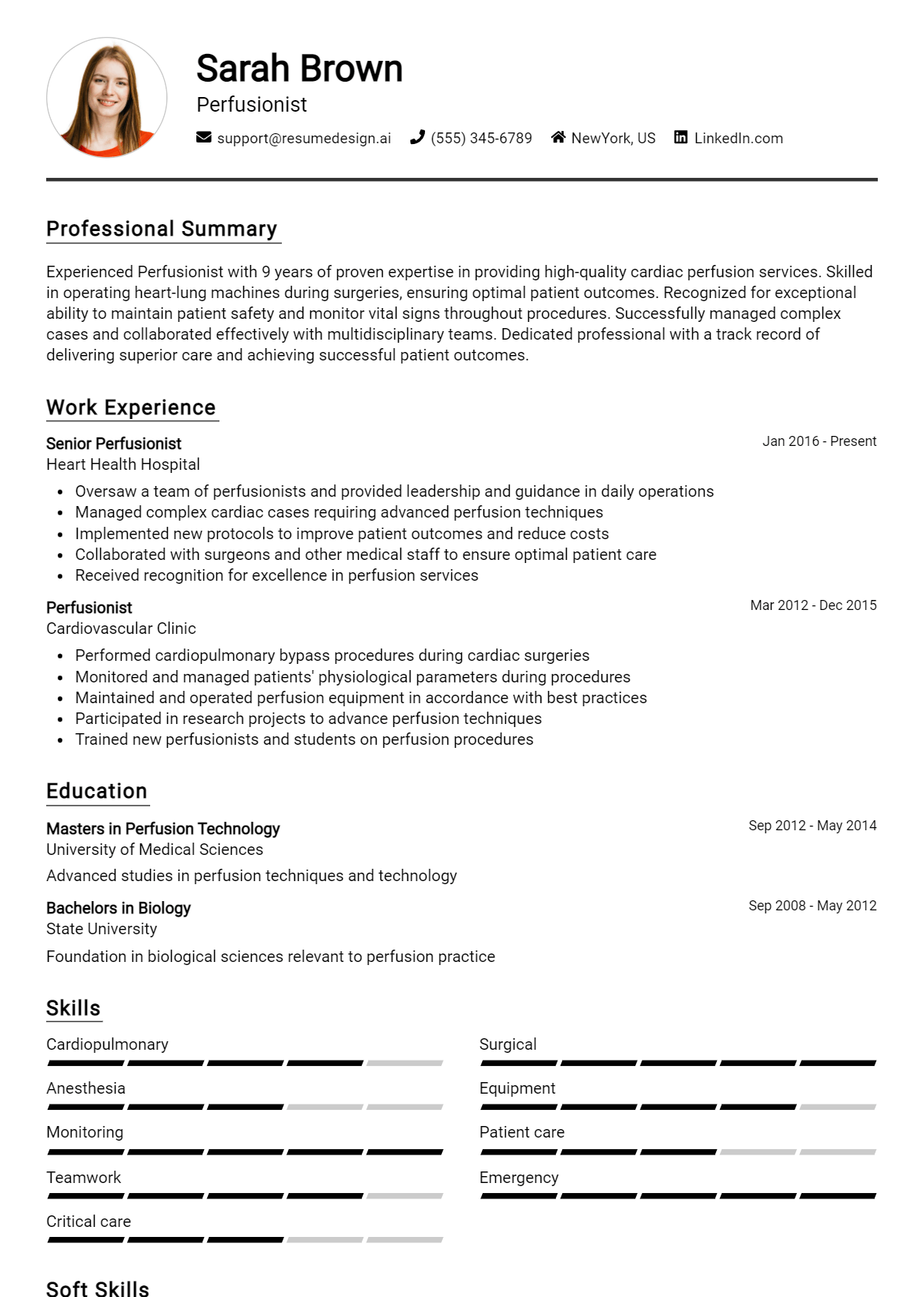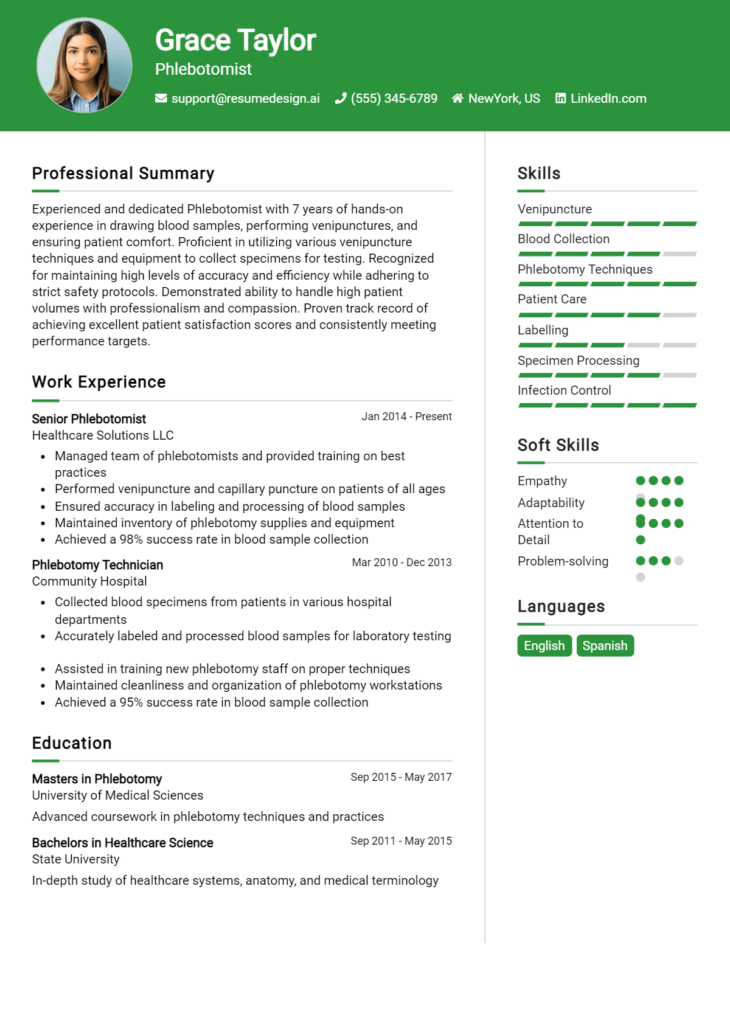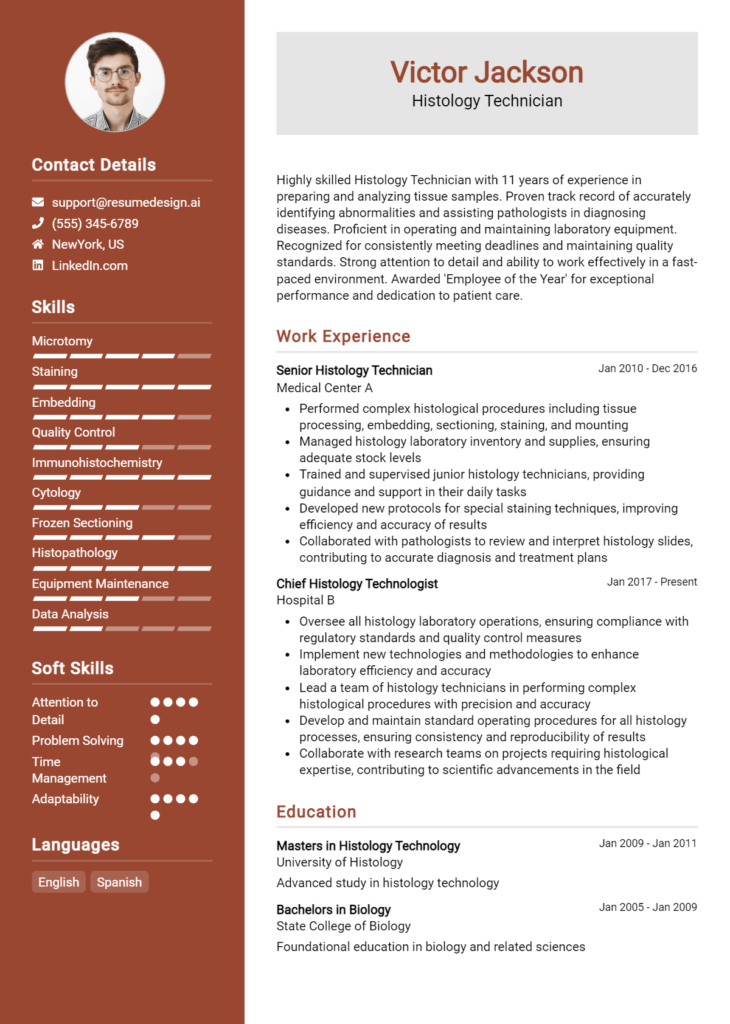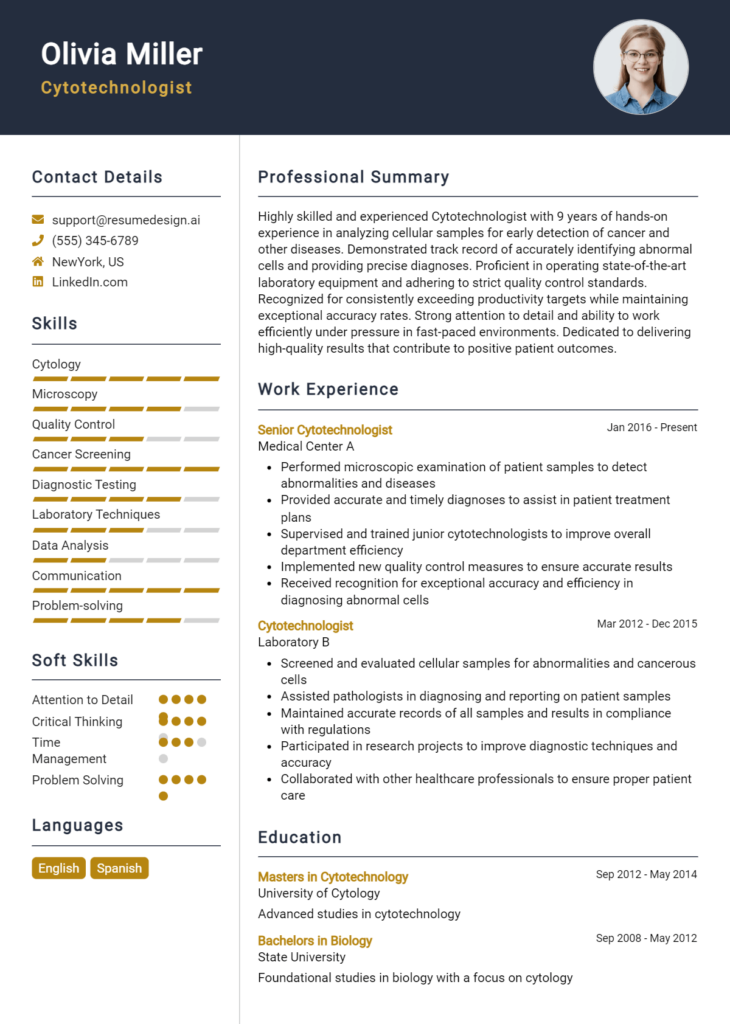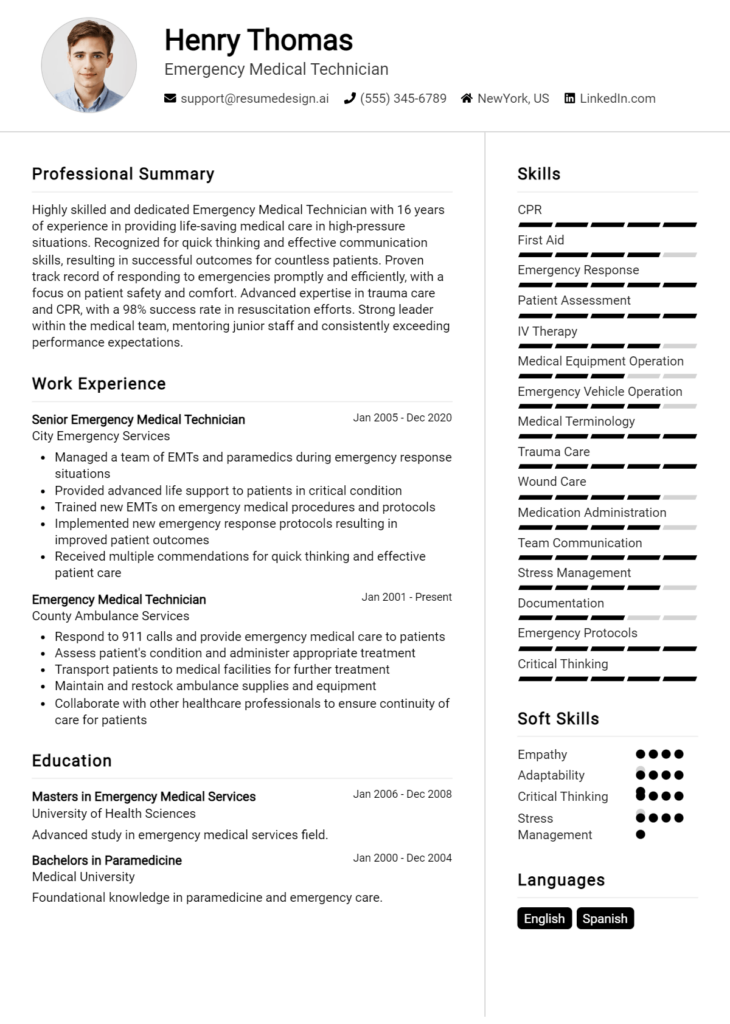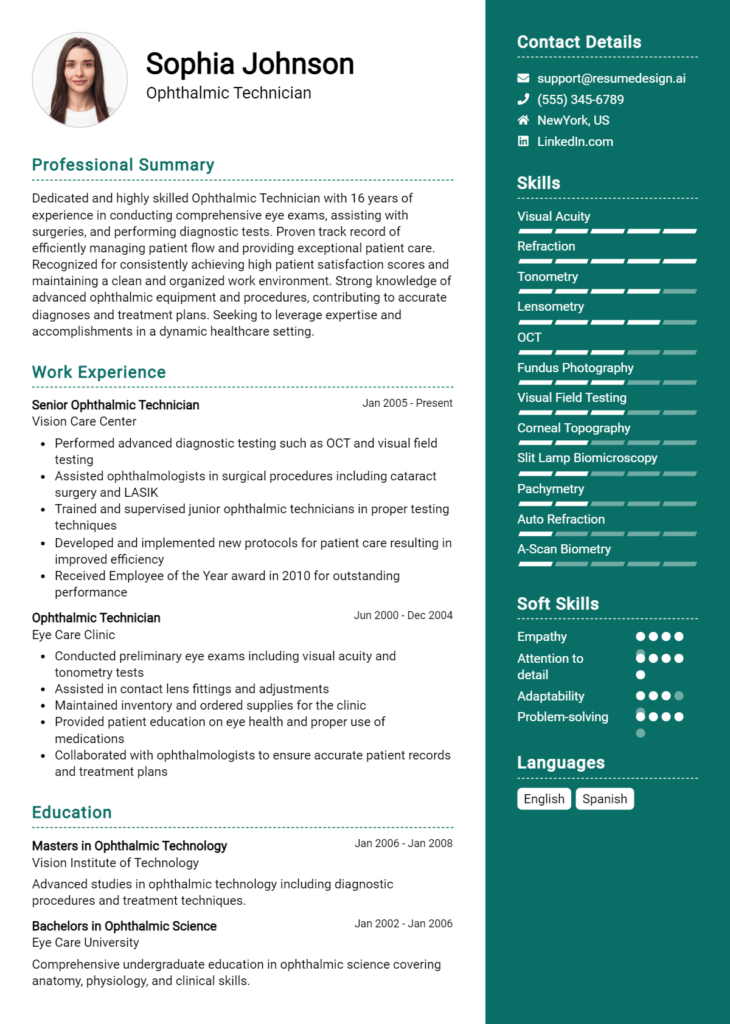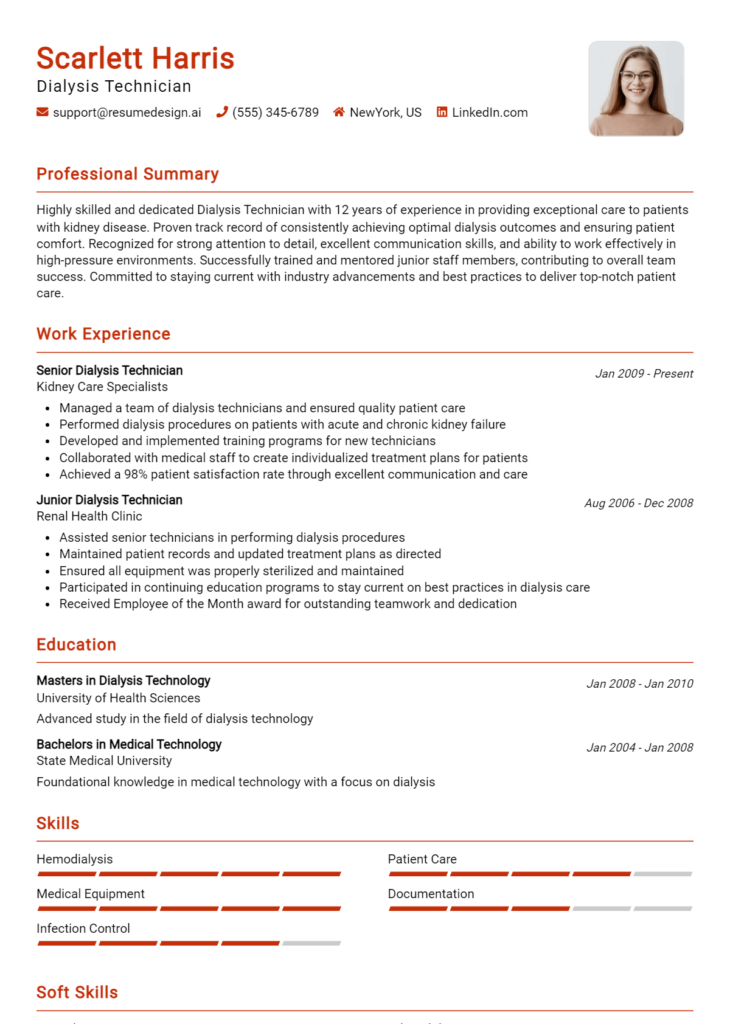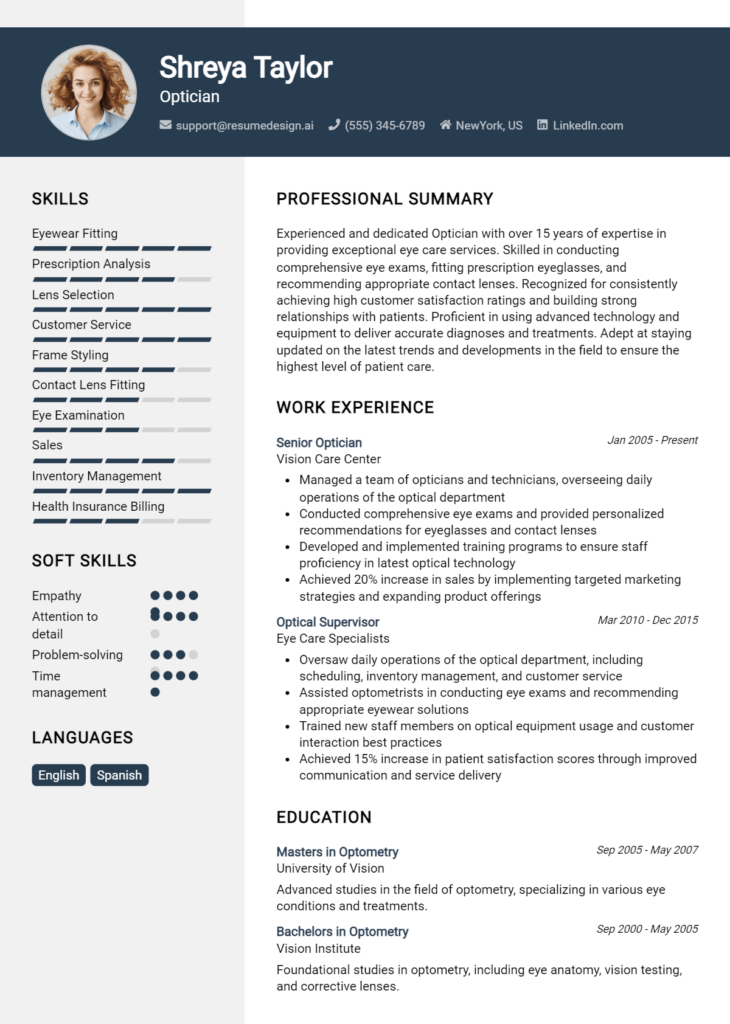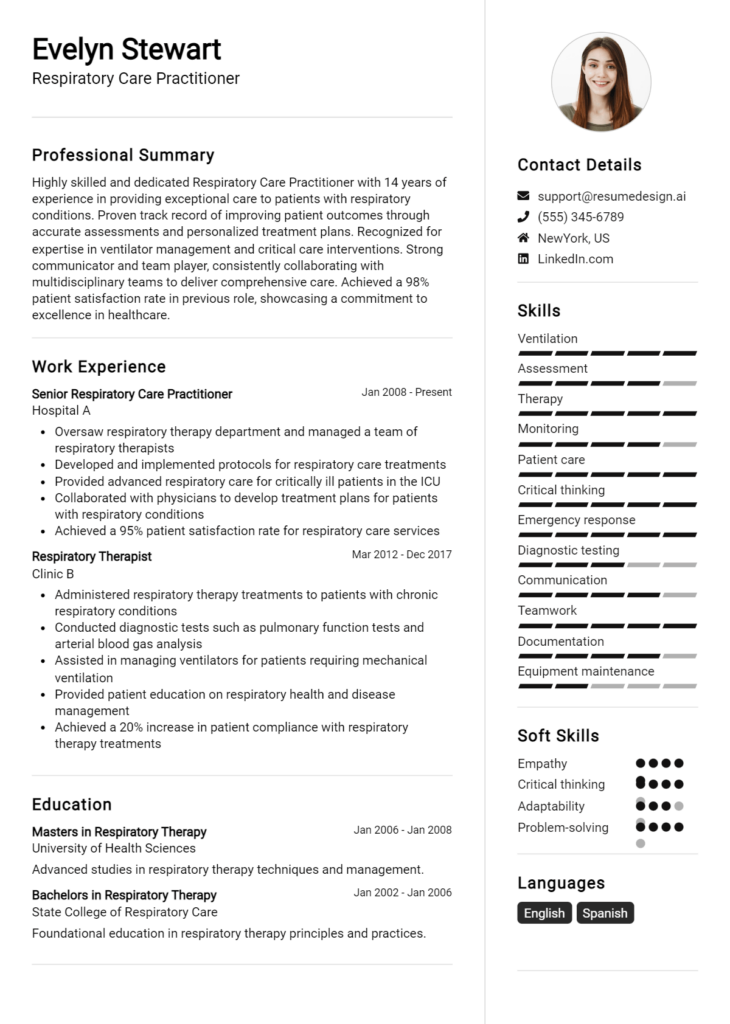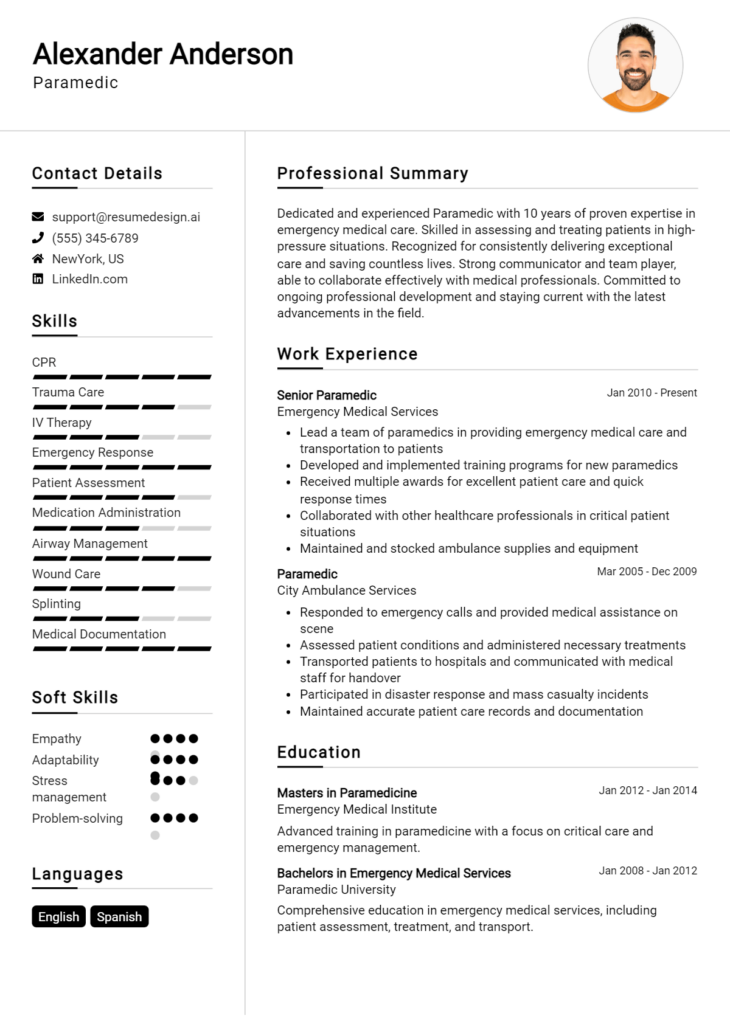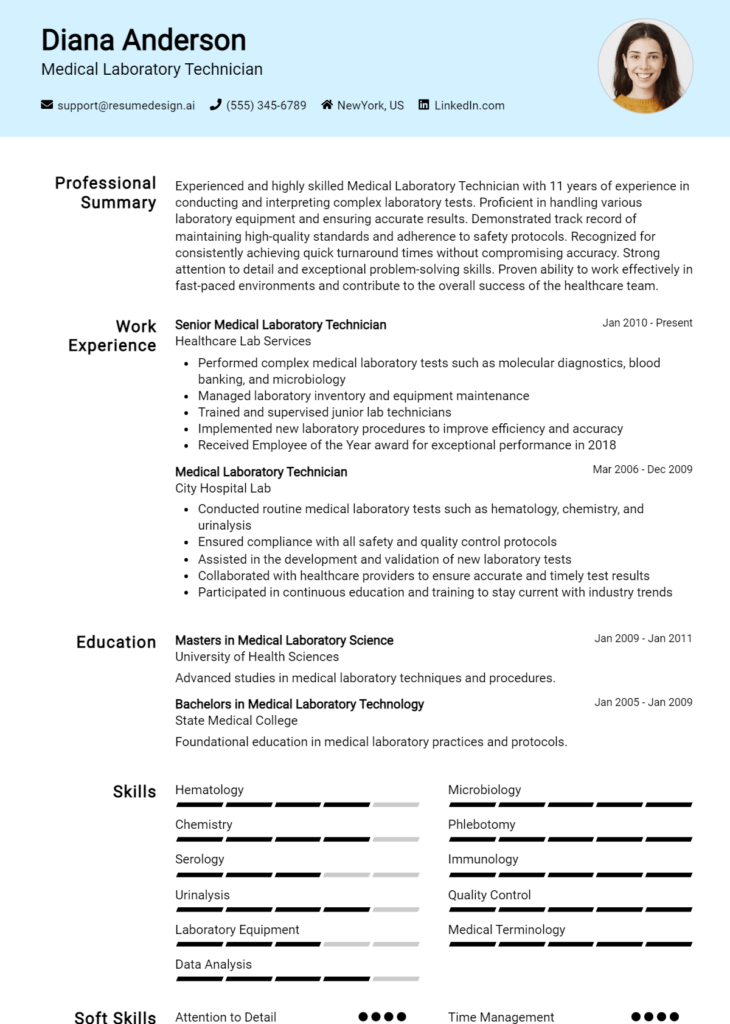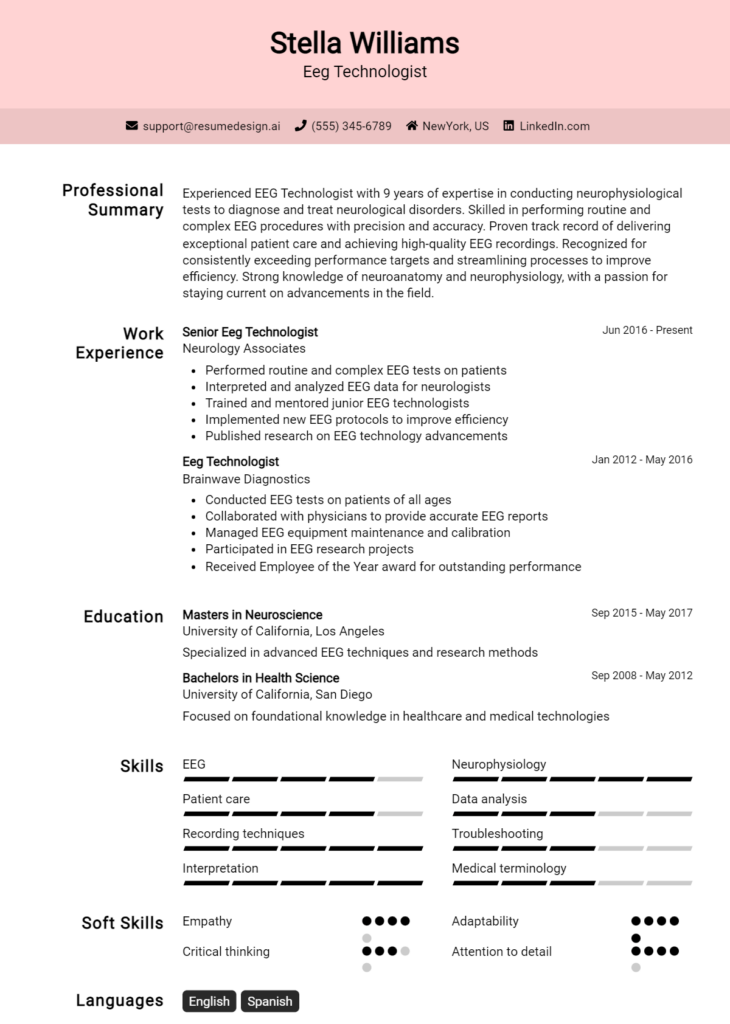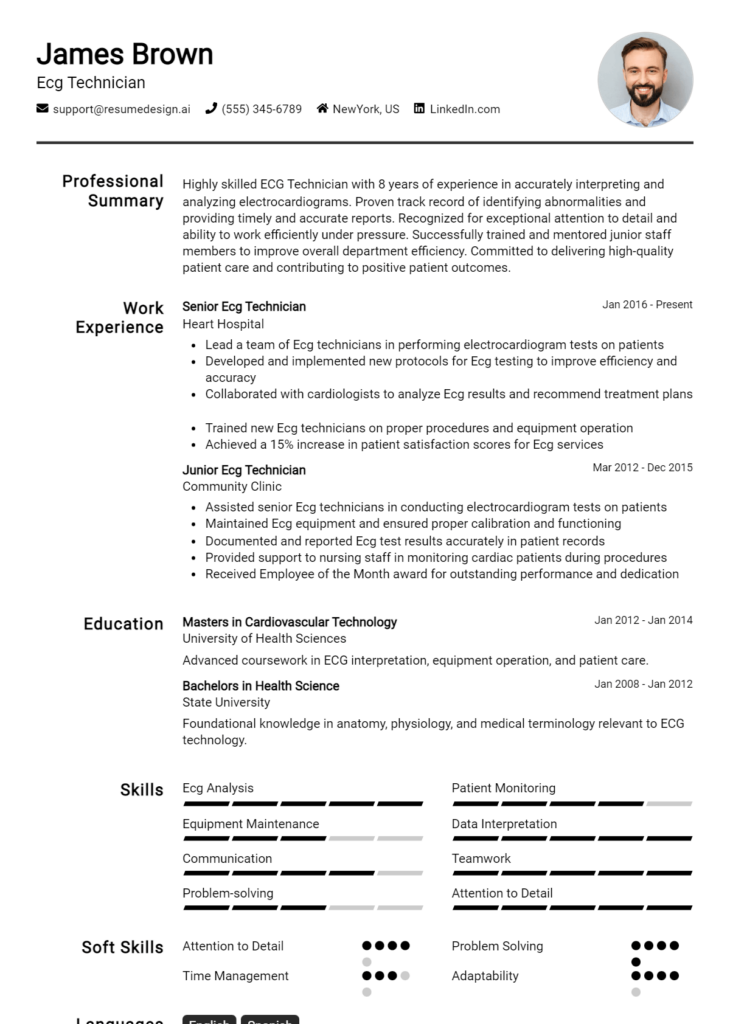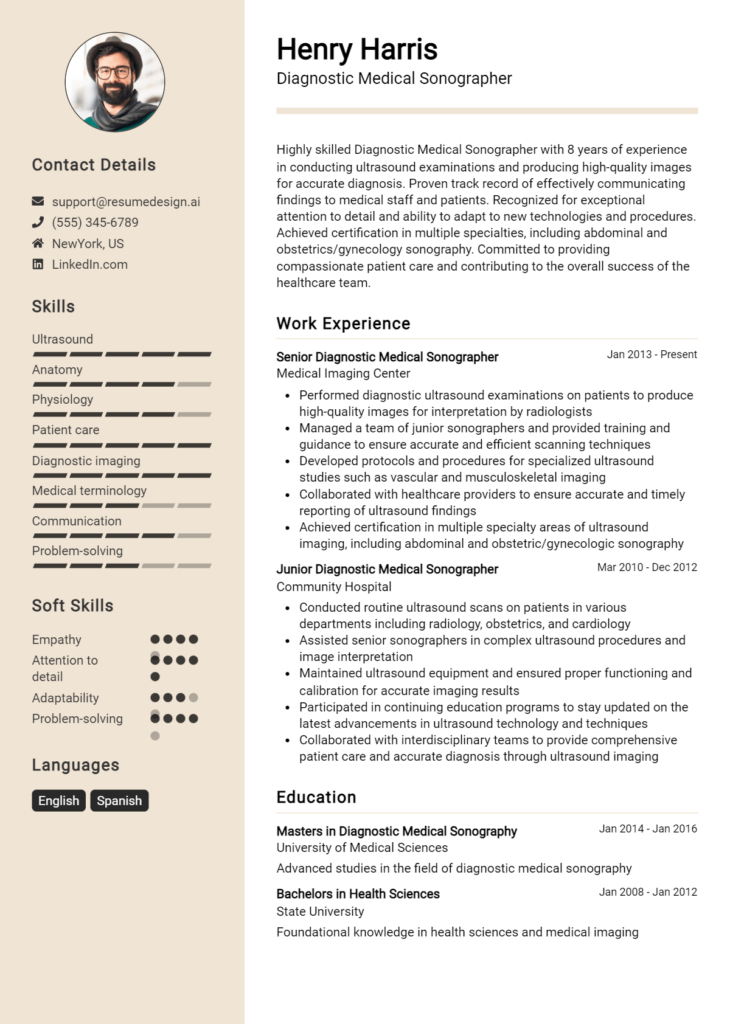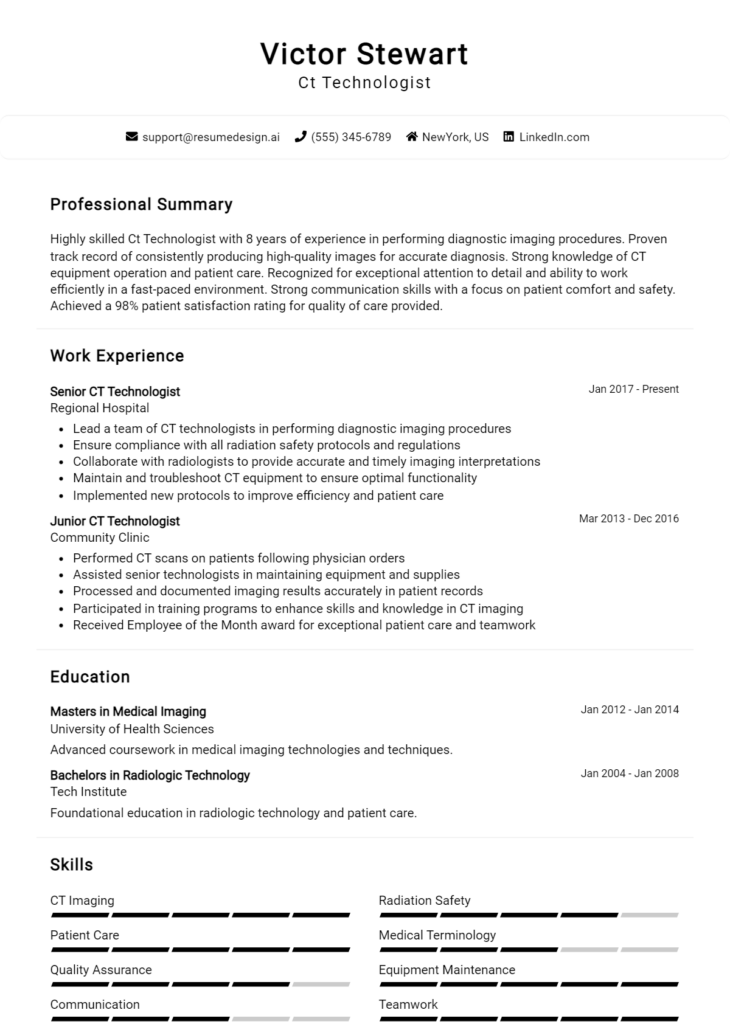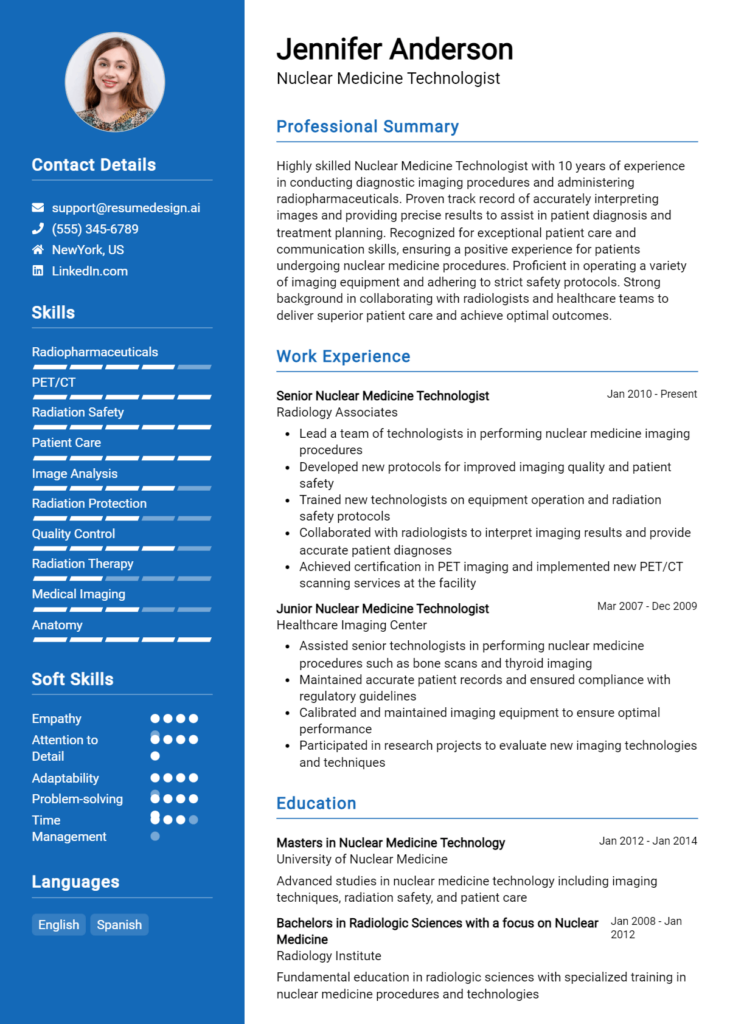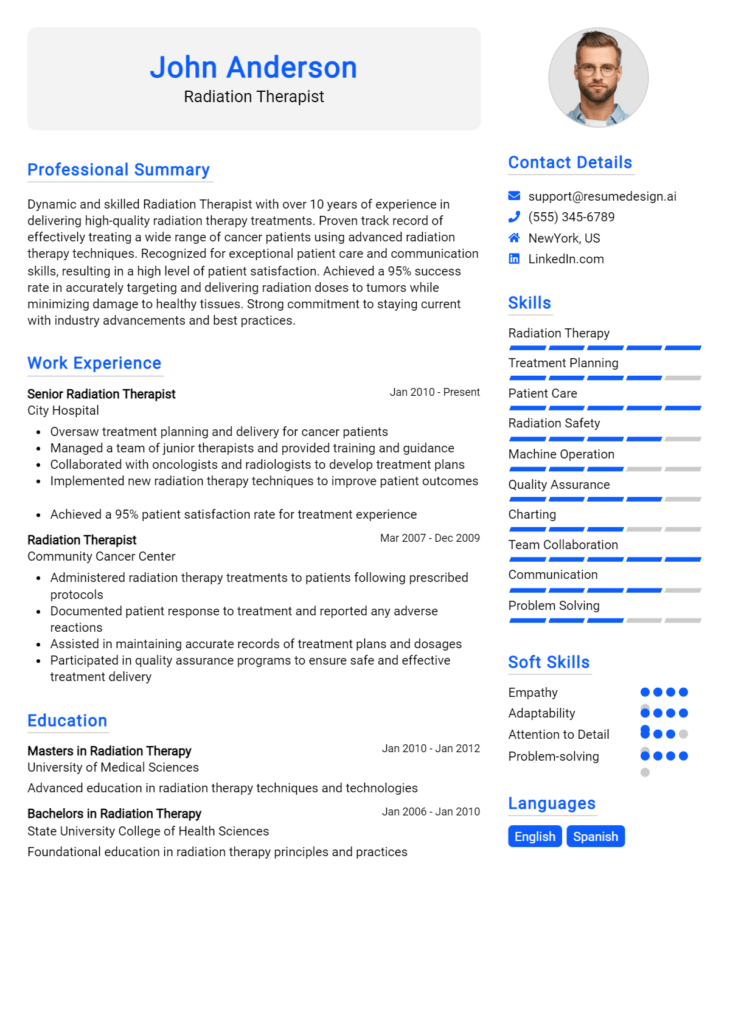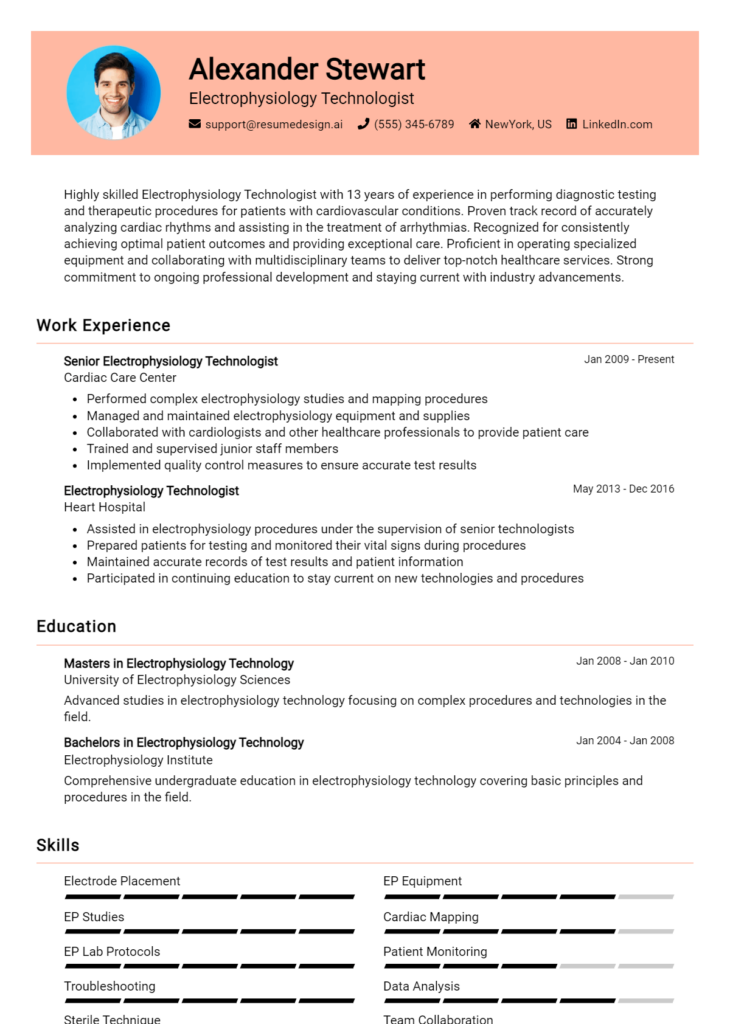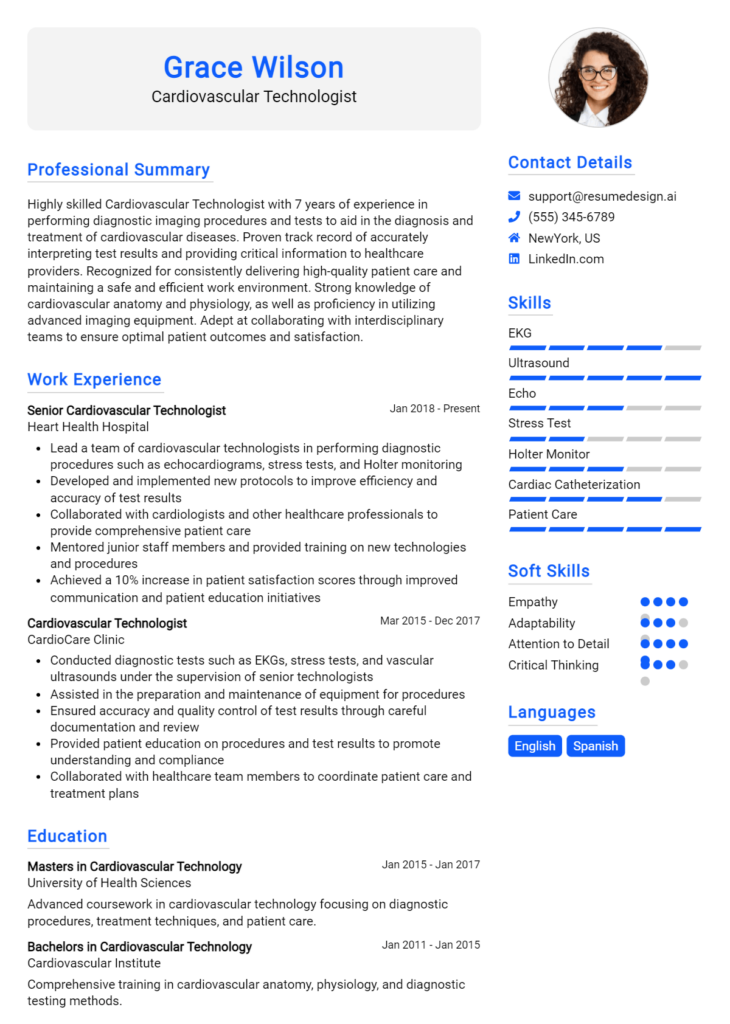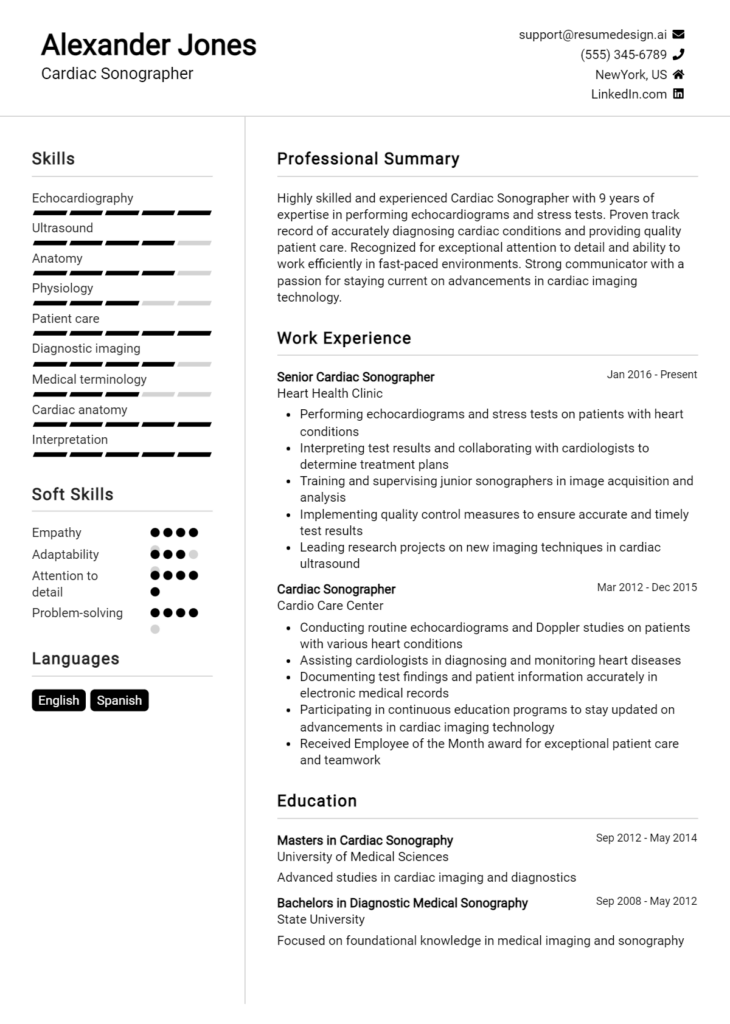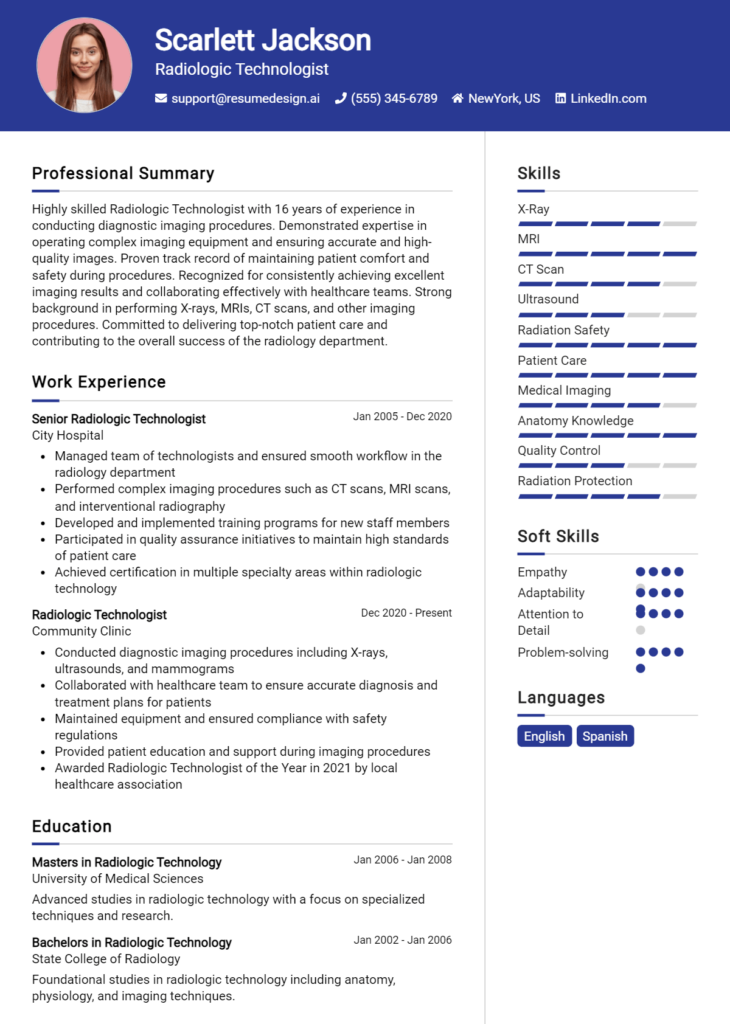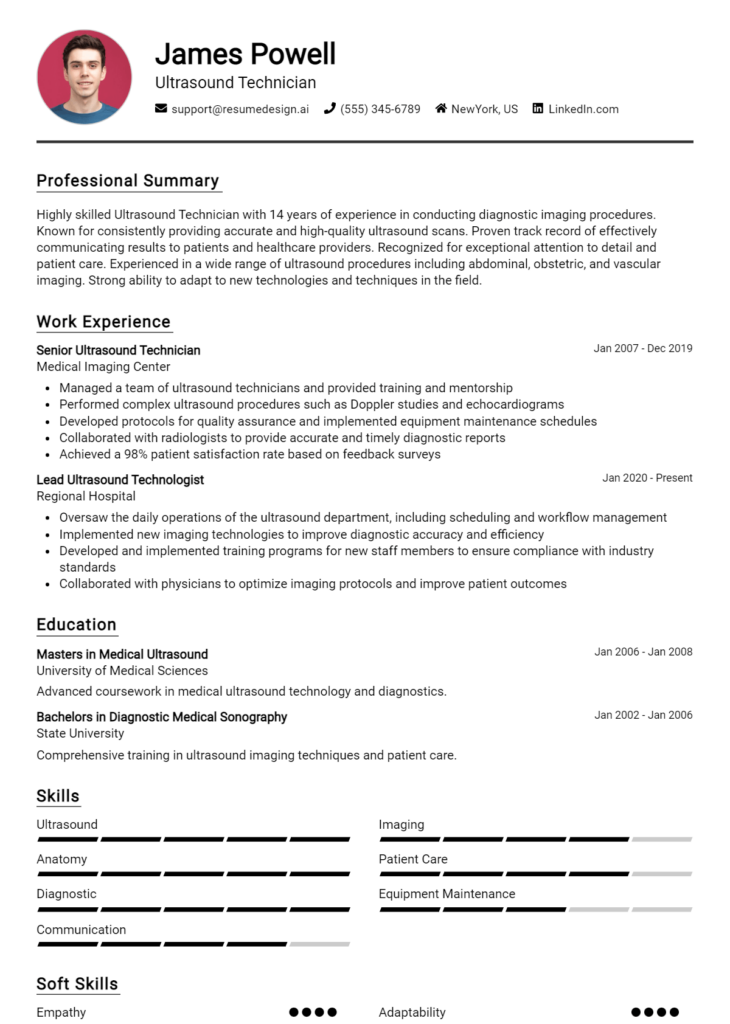Perfusionist Core Responsibilities
A Perfusionist plays a crucial role in the operating room, managing cardiopulmonary bypass and ensuring optimal patient care during complex surgeries. Key responsibilities include operating heart-lung machines, monitoring patient vitals, and collaborating with surgeons and anesthesiologists. Essential skills encompass technical proficiency, operational awareness, and advanced problem-solving abilities, which are vital for maintaining patient stability. A well-structured resume that highlights these competencies can significantly enhance career opportunities and align with the organization’s mission of providing exceptional healthcare.
Common Responsibilities Listed on Perfusionist Resume
- Operate and manage heart-lung machines during surgical procedures.
- Monitor patients' vital signs and adjust equipment accordingly.
- Collaborate with surgical teams to ensure optimal patient outcomes.
- Prepare and maintain perfusion equipment and supplies.
- Administer medications and blood products as needed.
- Document all perfusion activities and patient responses accurately.
- Conduct pre-operative assessments and patient education.
- Participate in quality assurance and safety protocols.
- Provide emergency response during critical situations.
- Stay updated on advancements in perfusion technology and techniques.
- Train and mentor junior perfusion staff and students.
High-Level Resume Tips for Perfusionist Professionals
In the competitive field of perfusion, a well-crafted resume is not just a document; it is your first opportunity to make a lasting impression on potential employers. As a Perfusionist, your resume should effectively showcase your specialized skills, relevant experience, and notable achievements, setting you apart from other candidates. Since hiring managers often sift through numerous applications, a polished resume can be the key to securing an interview. This guide will provide practical and actionable tips specifically designed for Perfusionist professionals, ensuring that your resume reflects the expertise and dedication needed for this critical role in the healthcare team.
Top Resume Tips for Perfusionist Professionals
- Tailor your resume to each job description by incorporating relevant keywords and phrases that align with the specific requirements of the position.
- Highlight your clinical experience prominently, including the types of procedures you’ve supported and your role in patient care during surgeries.
- Quantify your achievements by including metrics, such as the number of procedures performed or improvements in patient outcomes that resulted from your interventions.
- Showcase your proficiency with industry-specific technologies and equipment, emphasizing any certifications or training you have completed.
- Include a section for continuing education to demonstrate your commitment to staying current with advancements in perfusion techniques and practices.
- Utilize a clear and professional format that enhances readability, allowing hiring managers to quickly identify your qualifications and accomplishments.
- Incorporate relevant soft skills, such as teamwork, communication, and problem-solving, to illustrate your ability to collaborate effectively within a medical team.
- Provide a concise summary at the top of your resume that encapsulates your career highlights, unique skills, and professional aspirations.
- Keep your resume to one or two pages, focusing on the most relevant experiences and achievements to keep the reader engaged.
By implementing these targeted resume tips, you can significantly enhance your chances of landing a job in the Perfusionist field. A well-structured and content-rich resume not only demonstrates your qualifications but also reflects your professionalism and commitment to the critical role you play in patient care. With the right approach, your resume can effectively open doors to new opportunities in this rewarding profession.
Why Resume Headlines & Titles are Important for Perfusionist
In the competitive field of perfusion, a well-crafted resume headline or title can make a significant difference in capturing the attention of hiring managers. A strong headline serves as a powerful first impression, summarizing a candidate's key qualifications and professional identity in a succinct phrase. By being concise, relevant, and directly related to the job being applied for, a compelling headline can entice hiring managers to delve deeper into the resume, setting the stage for a successful job application.
Best Practices for Crafting Resume Headlines for Perfusionist
- Keep it concise: Aim for a headline that is brief yet informative, ideally no more than 10 words.
- Be role-specific: Use terminology and keywords that are relevant to the perfusionist role.
- Highlight key strengths: Focus on your most impressive qualifications, such as certifications or years of experience.
- Use action-oriented language: Employ strong verbs that convey your expertise and contributions.
- Avoid jargon: While it's important to use relevant terms, ensure the language is accessible and clear.
- Tailor for each application: Customize your headline to align with the specific job description and requirements.
- Showcase results: If possible, include quantifiable achievements that illustrate your effectiveness as a perfusionist.
- Maintain professionalism: Ensure the tone is appropriate for the medical field, avoiding overly casual language.
Example Resume Headlines for Perfusionist
Strong Resume Headlines
Dedicated Perfusionist with 5+ Years of Experience in Cardiac Surgery
Certified Clinical Perfusionist Specializing in Pediatric Cardiac Care
Results-Driven Perfusionist with Proven Track Record in Complex Procedures
Expert Perfusionist Committed to Enhancing Patient Outcomes through Innovative Techniques
Weak Resume Headlines
Perfusionist Looking for a Job
Experienced Healthcare Professional
Seeking Opportunities in Medical Field
The strong headlines are effective because they provide clear, specific information that immediately communicates the candidate's strengths and relevant experience in the perfusion field. They utilize precise language and highlight unique qualifications that make the candidate stand out. In contrast, the weak headlines lack specificity and fail to convey the candidate’s unique skills or experience, making them less memorable and impactful for hiring managers. By avoiding generic phrases and focusing on what sets them apart, candidates can create a more compelling narrative right from the start.
Writing an Exceptional Perfusionist Resume Summary
A resume summary is a crucial component of a Perfusionist's application, as it serves as a powerful introduction that quickly captures the attention of hiring managers. A well-crafted summary highlights key skills, relevant experience, and notable accomplishments that align with the job role. It provides a snapshot of the candidate's qualifications, ensuring they stand out in a competitive job market. By being concise and impactful, the summary sets the tone for the rest of the resume and should be tailored specifically to the job the candidate is applying for.
Best Practices for Writing a Perfusionist Resume Summary
- Quantify achievements: Use numbers to showcase successful outcomes, such as the number of procedures performed or success rates.
- Highlight core skills: Focus on critical skills relevant to perfusion, such as technical expertise, critical thinking, and teamwork.
- Tailor for the job description: Customize the summary to match the specific requirements and responsibilities outlined in the job posting.
- Use action verbs: Start sentences with strong action verbs that convey proactivity and results-driven performance.
- Keep it concise: Aim for 3-5 sentences that deliver maximum impact without overwhelming the reader.
- Showcase relevant experience: Mention specific roles or settings where you’ve successfully applied your perfusion skills.
- Include professional certifications: Highlight any relevant certifications or licenses that enhance your qualifications.
- Focus on patient outcomes: Emphasize your commitment to patient care and any improvements in patient outcomes you contributed to.
Example Perfusionist Resume Summaries
Strong Resume Summaries
Dedicated and detail-oriented Perfusionist with over 8 years of experience in cardiac and vascular surgeries, successfully managing over 500 procedures with a 98% patient satisfaction rate. Proven ability to collaborate effectively with surgical teams to ensure optimal patient outcomes. Certified by the American Board of Cardiovascular Perfusion.
Compassionate Perfusionist with a strong background in pediatric cardiac perfusion, having contributed to a 30% reduction in surgical complications through innovative perfusion strategies. Skilled in operating state-of-the-art perfusion equipment and maintaining regulatory compliance.
Results-driven Perfusionist with 10 years of experience in complex cardiac cases, recognized for enhancing surgical efficiency by implementing streamlined perfusion protocols, resulting in a 20% decrease in operating room time. Committed to ongoing education and professional development in cardiac care.
Weak Resume Summaries
Experienced Perfusionist looking for a new opportunity in a hospital setting. I have skills in many areas and have worked with various teams.
Perfusionist with several years of experience in the field. I am hardworking and dedicated to improving patient care.
The examples provided showcase strong and weak resume summaries effectively. The strong summaries present specific achievements, quantifiable results, and relevant skills that directly relate to the perfusionist role. In contrast, the weak summaries lack detail, specificity, and measurable outcomes, making them less impactful and memorable to hiring managers.
Work Experience Section for Perfusionist Resume
The work experience section of a Perfusionist resume is crucial, as it serves as a detailed showcase of the candidate's technical skills, team management abilities, and commitment to delivering high-quality care in high-stakes environments. This section allows candidates to highlight their hands-on experience with cardiopulmonary bypass and other perfusion techniques, demonstrating proficiency with various medical devices and technologies. By quantifying achievements and aligning their experience with industry standards, candidates can effectively illustrate their value to potential employers, making it essential to present this information clearly and convincingly.
Best Practices for Perfusionist Work Experience
- Highlight specific technical skills relevant to perfusion, such as operation of heart-lung machines and monitoring systems.
- Quantify achievements using metrics, such as the number of successful procedures performed or improvements in patient outcomes.
- Emphasize collaboration with surgical teams, anesthesia providers, and other healthcare professionals to ensure cohesive patient care.
- Detail leadership roles or responsibilities in managing a perfusion team or training new staff.
- Include any certifications or special training that enhance your expertise, such as Advanced Cardiac Life Support (ACLS).
- Use action verbs to convey your contributions and impact on the team and patient care outcomes.
- Align experience descriptions with industry standards and terminology to demonstrate familiarity with the field.
- Be concise yet descriptive, ensuring each bullet point effectively communicates your experience’s significance.
Example Work Experiences for Perfusionist
Strong Experiences
- Successfully managed perfusion services for over 250 cardiac surgeries annually, contributing to a 15% reduction in post-operative complications.
- Led a team of 5 perfusionists during complex surgeries, facilitating seamless communication that enhanced team efficiency and patient safety.
- Implemented a new monitoring protocol that improved response time to patient changes, resulting in a 20% increase in overall patient satisfaction scores.
- Developed and conducted training programs for new staff, increasing team competency and compliance with industry standards by 30%.
Weak Experiences
- Assisted in various surgeries as needed.
- Worked in a hospital setting for a couple of years.
- Performed perfusion tasks and helped with patient monitoring.
- Participated in team meetings to discuss cases occasionally.
The examples provided illustrate a clear distinction between strong and weak experiences. Strong experiences are characterized by quantifiable outcomes, specific responsibilities, and clear contributions to patient care and team dynamics. In contrast, weak experiences lack detail and fail to convey the candidate's impact or skills, making it challenging for potential employers to assess their qualifications effectively.
Education and Certifications Section for Perfusionist Resume
The education and certifications section of a Perfusionist resume is crucial for demonstrating the candidate's academic foundation and professional qualifications. This section not only showcases the applicant's formal education but also highlights important industry-relevant certifications and ongoing commitment to professional development. By detailing relevant coursework, specialized training, and recognized certifications, candidates can significantly enhance their credibility and demonstrate their alignment with the job role, making them more attractive to potential employers.
Best Practices for Perfusionist Education and Certifications
- Include degrees from accredited institutions relevant to perfusion science or medical technology.
- List certifications from recognized bodies, such as the American Board of Cardiovascular Perfusion (ABCP).
- Highlight any specialized training or workshops attended that pertain to perfusion technology.
- Provide specific details about relevant coursework that aligns with the responsibilities of a perfusionist.
- Stay updated with the latest certifications to reflect continuous learning and professional growth.
- Use clear and concise language to describe your education and certifications, avoiding overly technical jargon.
- Prioritize the most relevant credentials, placing them towards the top of the section.
- Include the dates of completion for degrees and certifications to demonstrate recent qualifications.
Example Education and Certifications for Perfusionist
Strong Examples
- M.S. in Perfusion Science, University of Cardiac Health, 2021
- Certified Clinical Perfusionist (CCP), American Board of Cardiovascular Perfusion, 2022
- Advanced Cardiovascular Perfusion Techniques, National Perfusion Conference, 2023
- B.S. in Biomedical Engineering, State University, 2019
Weak Examples
- Ph.D. in Environmental Science, University of Green Studies, 2018
- Certification in Basic Life Support (BLS), 2015
- General Studies, Community College, 2017
- Certification in Microsoft Office Suite, 2021
The examples provided illustrate a clear distinction between strong and weak qualifications in the context of a Perfusionist role. Strong examples emphasize relevant academic credentials and recognized certifications that reflect the candidate's readiness for the position. In contrast, weak examples showcase qualifications that are not pertinent to perfusion, such as unrelated degrees or general certifications, which do not enhance the candidate's profile for this specialized field.
Top Skills & Keywords for Perfusionist Resume
As a Perfusionist, the ability to effectively showcase your skills on your resume is paramount to standing out in a competitive job market. Your skills not only reflect your technical capabilities but also your ability to work collaboratively in high-stakes environments. A well-crafted resume highlights both hard and soft skills, demonstrating your proficiency in utilizing specialized equipment and performing complex procedures, as well as your interpersonal and communication abilities that are crucial in a surgical setting. By emphasizing these skills, you can illustrate your readiness to contribute to a surgical team and patient care.
Top Hard & Soft Skills for Perfusionist
Soft Skills
- Attention to Detail
- Communication Skills
- Teamwork and Collaboration
- Critical Thinking
- Problem-Solving Skills
- Emotional Resilience
- Adaptability
- Time Management
- Empathy
- Stress Management
Hard Skills
- Knowledge of Cardiopulmonary Bypass Techniques
- Proficiency in Operating Perfusion Equipment
- Understanding of Hemodynamics
- Experience in Managing Patient Records
- Familiarity with Blood Gas Analysis
- Ability to Monitor Vital Signs
- Knowledge of Pharmacology
- Skills in Emergency Response Procedures
- Proficiency in Data Analysis and Interpretation
- Certification in Advanced Cardiac Life Support (ACLS)
For a comprehensive overview of the essential skills needed for a Perfusionist, as well as how to effectively present your work experience, you can explore additional resources to enhance your resume. Furthermore, understanding the nuances of skills can significantly bolster your chances of landing an interview and ultimately securing your desired position.
Stand Out with a Winning Perfusionist Cover Letter
Dear [Hiring Manager's Name],
I am writing to express my interest in the Perfusionist position at [Hospital/Organization Name], as advertised on [where you found the job posting]. With my extensive training in cardiovascular perfusion and a passion for delivering exceptional patient care, I am eager to bring my skills and dedication to your esteemed team. My background includes [number] years of experience in various clinical settings, where I have honed my ability to operate heart-lung machines and manage complex perfusion protocols during surgical procedures.
During my time at [Previous Hospital/Organization Name], I successfully collaborated with multidisciplinary teams to ensure the highest standards of patient safety and care. My hands-on experience with advanced perfusion techniques and technologies, coupled with my strong analytical skills, has prepared me to respond effectively to the dynamic challenges that arise in the operating room. I take pride in my commitment to ongoing education and staying current with emerging trends and advancements in perfusion science, which I believe is crucial for providing the best possible outcomes for patients.
In addition to my technical expertise, I possess strong communication skills that allow me to effectively interact with surgical teams, patients, and their families. I understand the critical role a perfusionist plays during cardiac surgeries and recognize the importance of conveying information clearly and compassionately. I am confident that my ability to maintain a calm demeanor under pressure, combined with my dedication to collaborative practice, would make me a valuable asset to [Hospital/Organization Name].
I would be honored to contribute my knowledge and skills as part of your team. Thank you for considering my application. I look forward to the opportunity to discuss how my experience aligns with the goals of your department and how I can contribute to the exceptional care provided at [Hospital/Organization Name].
Sincerely,
[Your Name]
[Your Phone Number]
[Your Email Address]
Common Mistakes to Avoid in a Perfusionist Resume
Crafting a compelling resume as a perfusionist is essential for standing out in a competitive job market. However, many candidates make common mistakes that can diminish their chances of securing an interview. By understanding these pitfalls, you can enhance your resume and better showcase your qualifications. Here are some frequent errors to avoid:
Lack of Specificity: Failing to include specific details about your experience can make your resume vague. Be sure to quantify your achievements, such as the number of procedures performed or types of surgeries supported.
Ignoring Keywords: Many healthcare employers use applicant tracking systems (ATS) to filter resumes. Not including relevant keywords from the job description can result in your resume being overlooked.
Overly Complex Language: Using jargon or overly complicated terminology can confuse readers. Aim for clear and concise language that effectively communicates your skills and experience.
Neglecting Education and Certifications: As a perfusionist, your educational background and certifications are crucial. Ensure these sections are prominently displayed and up-to-date, as they are often the first things employers look for.
Inconsistent Formatting: A poorly formatted resume can appear unprofessional. Use a consistent font, size, and layout throughout to enhance readability and make a strong first impression.
Including Irrelevant Information: Tailor your resume to the specific perfusionist role you’re applying for. Avoid including unrelated work experience or skills that do not pertain to the position.
Lack of Action Verbs: Failing to use strong action verbs can make your accomplishments seem passive. Start bullet points with dynamic verbs like "managed," "assisted," or "implemented" to convey impact.
Forgetting to Proofread: Typos and grammatical errors can undermine your professionalism. Always proofread your resume or have someone else review it to ensure it is polished and error-free.
Conclusion
As a perfusionist, you play a critical role in the medical field, operating heart-lung machines and managing the patient's physiological status during surgeries. With the demand for skilled perfusionists on the rise, it's essential to have a standout resume that reflects your expertise and experience.
Throughout this article, we have explored the vital skills and qualifications necessary for a successful career in perfusion. We discussed the importance of certifications, hands-on experience, and the ability to work collaboratively within a surgical team. Additionally, we highlighted the significance of showcasing your technical proficiency and understanding of the latest perfusion technology.
To ensure your resume effectively communicates your qualifications, take the time to review and refine it. Utilize resources like resume templates to create a polished layout, or leverage the resume builder for a guided approach to crafting each section. Explore resume examples to gather inspiration and understand how to present your skills and experiences compellingly. Don’t forget to complement your resume with a professional cover letter using our cover letter templates.
Now is the perfect time to take action! Review your perfusionist resume today and ensure it stands out in the competitive job market. Your next opportunity awaits!

